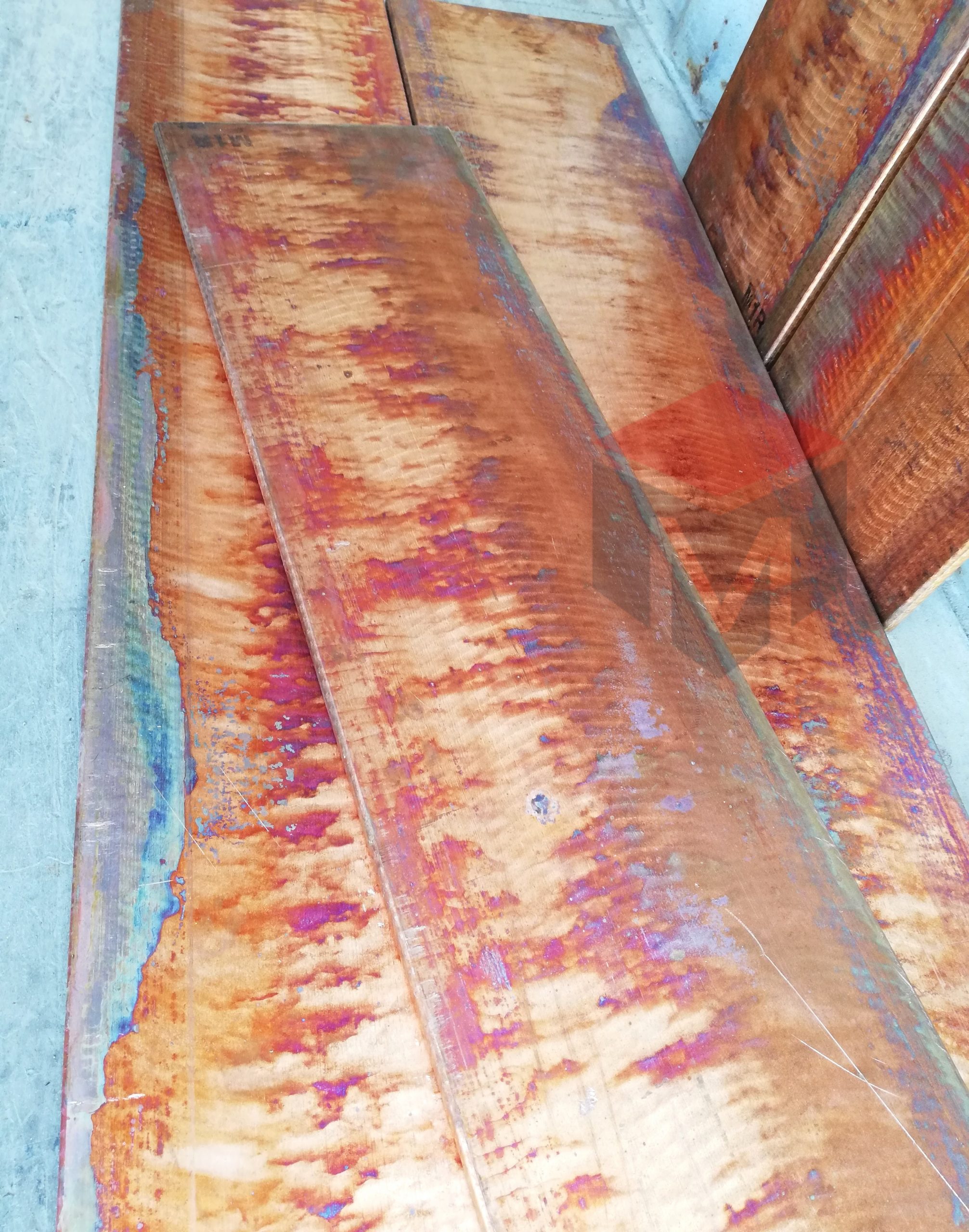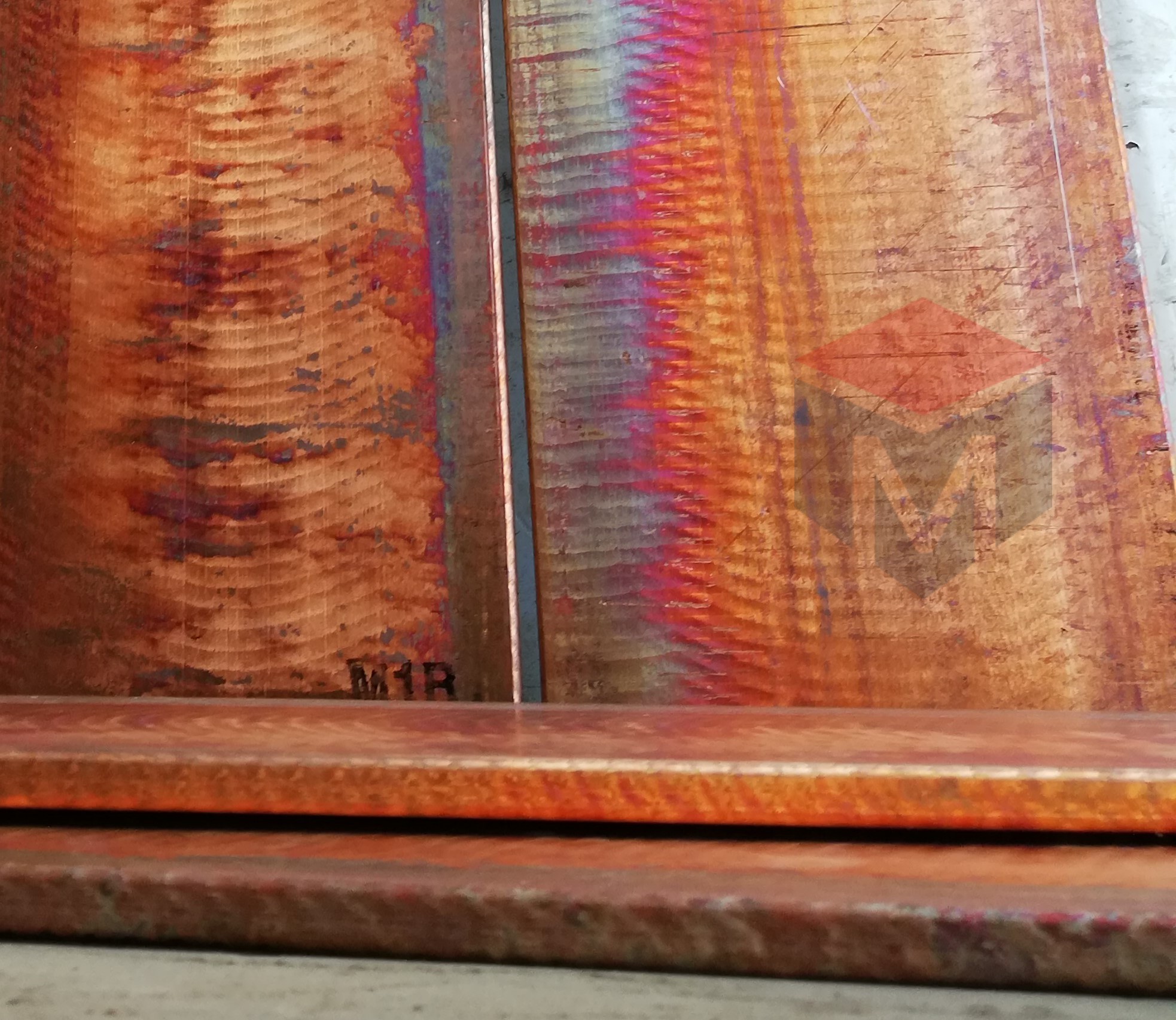Copper anode 500x200x10mm 8.700 kg Cu min 99.90% with Phosphorus
IMPORTANT: Buying with a valid VAT ID?
Please contact us by email: info@widerangemetals.com in order to proceed your order using the zero (0%) VAT rate.
For our clients, we are offering possibility to achieve the best results using high quality materials. You have the opportunity to buy a quality product with a wide range of uses, we believe that this copper anode will meet all your requirements.
Place of origin: EU
Copper Cu 99.90% min.
Phosphorus content 0,04 – 0,06 %
Weight and anode size: 8.700 kg. / 500 x 200 x 10 mm
Specifications of copper anode:
Cu 99.90%
Analysis
Cu 99,90 % min. S 0,003 %
P 0,04 – 0,06 % Sb 0,0005 %
Ag 0,0025 % Se 0,0005 %
Al 0,0005 % Si 0,0005 %
As 0,0003 % Sn 0,001 %
Bi 0,0005 % Te 0,0005 %
Fe 0,005 % Zn 0,0005 %
Mn 0,0005 % Pb 0,0005 %
Ni 0,0005 %
Copper anode M1R is the best solution for metal processing to increase its electrical conductivity.
Many manufacturers choosing copper anode for its subsequent operation in the field of microelectronics, also for electrotyping and copper plating projects.
Copper plating is one of the main area where copper anode is used as raw material.
When applying a copper coating to the surface of an article during chemical electrolysis, with the help of anode, protective layer of copper is formed on the treated surface.
Properties of copper electroplating include: excellent electrical conductivity, good lubrication, and solderability.
If you have a special requirements: Just contact us and we will try to help you on all your questions. We working with suppliers inside and outside the European Union, we have an opportunity to offer you many more options in the field of metal anodes, also different metal forms such as metal powders.
You are customer from Europe Union? And buying with a valid VAT ID?
Please contact us by email: info@widerangemetals.com in order to proceed your order using the zero (0%) VAT rate.
Properties Of Good Copper-Anode
Mostly used as electroplating, copper anode is essential for electrical conductivity. As it is often used in electronic components, automotive parts, printed circuit boards, decorative electroplating, and others, the bad quality could inhibit the whole work. To help you find the high-quality one, the following paragraphs contrasts the bad and good-quality copper anode.
Copper anode description
Generally, copper-anode belongs into two types: pure and phosphorous copper. The main difference is the second is added with higher content of phosphor. Meanwhile, the first one is pure and oxygen-free. They serve different functions; pure copper is widely involved in the plating process, and the phosphorous type is mostly in PCBs. Despite its types, a good copper anode should have fine lubrication, solderability, and also electrical conductivity.
Benefits of high quality copper anode
Once the anode is involved in a project, the good one will show these benefits:
- Low build-up sludge of impurities
- Clean and clear purity
- Excellent dissolubility
- Predictable and measurable electrical conductivity
- Evenly distributed quality
- Low-to-normal additives content
- Small probability of experiencing passivation
Passivation causes
The most common down of low-quality copper anode is the tendency to have passivation. Passivation refers to the decrease of ionic transfer between the cathode and anode. Usually, it is shown as a formed-up layer on the anode. Besides, these factors also trigger the anode passivation in acid copper electrolytes.
- Too much chloride: the clearest sign of the cause is the light grey to white layer built-up on the anode. Solution analysis can be done to confirm.
- Clogged anode bags: as the flow is blocked, the solution turns to be supersaturated.
- High concentrated solution: another cause that can be confirmed through solution analysis is shown by the too-high level of contaminants like sulphuric acid or copper sulfate.
- Immoderate current density of anode: the maximum anode current density is 2.5A/dm2.
- Low-quality or improper anode: check the content in the copper anode before using it.



